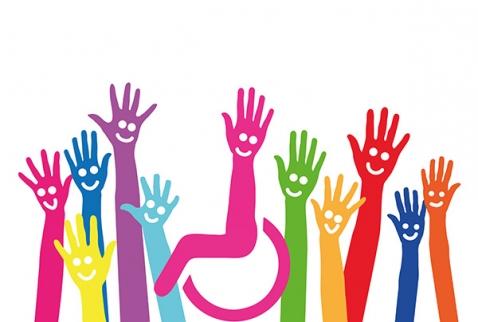
Close your eyes and try to get on without seeing what is around you. Seat you in a wheelchair and determine if it is easy to access public transport and visit your favourite restaurant.
Perhaps you have not tried to live these experiences, but you could imagine the result. Public administrations are making an effort to make our environment more accessible, but it is true that there is still work to be done and people with disabilities face barriers that limit their movements.
To try to make these daily situations easier, simple applications have emerged in recent years that provide useful information about the environment using open data. The objective: to make the daily life of people with disabilities easier.
Here are some examples:
- Lazzus is an assistant created by Neosentec that accompanies blind and visually impaired people in their daily journeys, creating an auditory field of vision. The application provides relevant information about the environment, such as the situation of crosswalks, crossroads, stairs, nearby establishments, etc. Simply point a direction with the mobile to inform you about the elements around. It also allows you to customize searches, activating filters or saving frequent points as favourites.
- Mapcesible is an initiative of Fundación Telefónica, COCEMFE and ILUNION. It is a collaborative platform that allows mapping the accessibility of different places so that people with reduced mobility can plan their daily trips. Information is obtained in two ways. The application incorporates 14 datasets from official bodies such as the Ministry of Agriculture and Environment or different municipalities. In addition, any citizen, with or without reduced mobility, can assess the accessibility of the places they visit. They just have to register with an email and answer a series of simple questions that allow to quickly define how accessible a place is. Some examples of questions are “Is it close to public transport?” or “Has it an adapted toilet?”. There are currently more than 22,000 mapped spaces.
- Disable park is a web platform and mobile application created by 3dids, which offers all available information on the exact location of parking spaces for people with reduced mobility. Its objective is not only to improve the day-to-day life of people with reduced mobility and their companions, but also seeks to raise awareness among companies and individuals through the “sponsorship of places”: users who wish can pay an amount per year to put their name, or a friend´s name, to a parking space. The application also allows to report when a place is occupied by a vehicle without accreditation or add new parking spaces that were not previously mapped in the application.
- Sin barreras is a web application consisting of a search engine for accessible spaces, adapted parking lots and architectural barriers. The user only has to enter a location or short description to see the results or add new elements not previously included in the application. Sinbarrera.es received a grant in the form of a Project Construction Grant from the Youth Initiative Cabinet of the Junta de Extremadura, and was also awarded with the Otaex Universal Accessibility Award 2012.
These 4 examples of applications demonstrate what can be done from the open data. An opportunities increase if we also enrich the public data available with the information collected by anonymous citizens through citizen science initiatives. All this information not only help people with disabilities to move in an easier way, but it can also help to determine the gaps and take the necessary measures to get cities without barriers.
Do you know more examples of applications that can improve the lives of people with disabilities? Tell us in the comments.